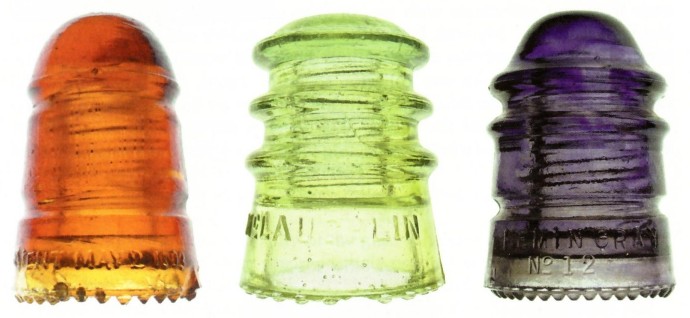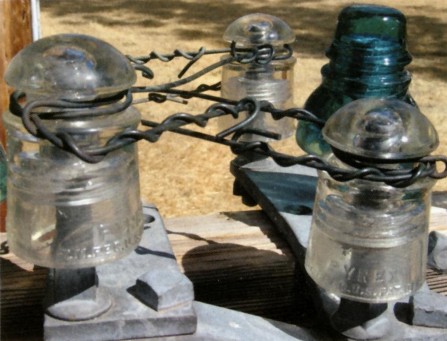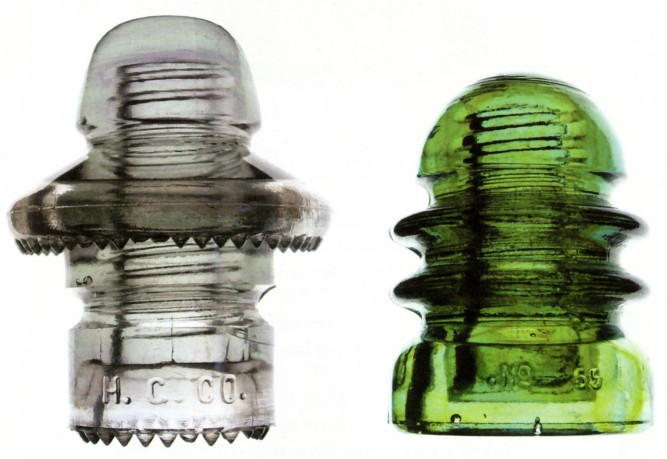Exchanges, Kegs, Tramps & Fantoms
By Ed Himmelwright
Reprinted from "Crown Jewels of the Wire", December 2005, page 42
Editor's Note: Retired from a career as a lineman, Ed thought he'd share
information on how certain styles of insulators were used. We've added some
photographs which are intended to help illustrate his text.
A buckarm pole was a pole used at intersections, mostly out in the country.
There would be from two to six crossarms, each with six to ten pins. The
crossarm would be placed on the poles facing different directions.
These poles served as a junction for open wire telephone lines coming
together in four to six different directions. Insulators nicknamed
"exchange" or "kegs" were used on buckarm poles. The two
groves in the insulators were used for dead-ending the open wire in any
direction necessary.

CD 112's & 114's are often nicknamed "kegs" due to their rounded shapes,
while CD 113's & 115's are more apt to be called "exchanges".
Shown above are: CD 114 Hemingray in amber,
CD 115 McLaughlin "citrine green",
and a CD 113 Hemingray in swirled purple.
About every insulator collector knows what a transposition insulator looks
like. The telephone companies often had transposition insulators on every third
pole. But the railroad did not call them transpositions. They called them
fantoms. Fantoms were used for the railroad block lines and any communication
circuits the railroad had. Most railroad telephone lines were magneto phones
were were set up station to station, and the block lines were set out along the
rail tracks in steel boxes with a large brass padlock.
A fantom is made of all steel clamps one a wood cross arm with two u-shaped
steel clamps. There are two-pin and four-pint fantoms. The railroads spaced
their fantoms further apart than the telephone companies did transpositions.

All example of a fantom setup from a collector's backyard display.
Notice how the wires transpose their positions by being directed
from an insulator on one side to all insulator on the opposite side.
Any style of insulator could be used; transposition insulators were
not necessary.
Telephone companies used transposition styles like CD 190/191 through CD 205.
I never saw a single transposition insulator used on any of our eastern
railroads. The state of Pennsylvania had a lot of railroads, and I have a map of
all the independent telephone companies in the state. There were 77. That's not
including the old Bell system. I worked for ten of them during my forty years as
a lineman.

Tile purpose of transposing the lines at frequent intervals was to prevent "cross talk"
that could occur when open wires were strung immediately adjacent to each other over
long distances. You can understand why preventing cross talk was a more important
concern to a phone company than a railroad. Shown above is a CD 196 HG Co with purple
swirls; and a CD 205 Hemingray with green swirls. Insulators shown in this article are from
the collections of Bill Meier, Glenn Adkins, Bob Stahr, Tommy Bolack & Mid Norris.
| 